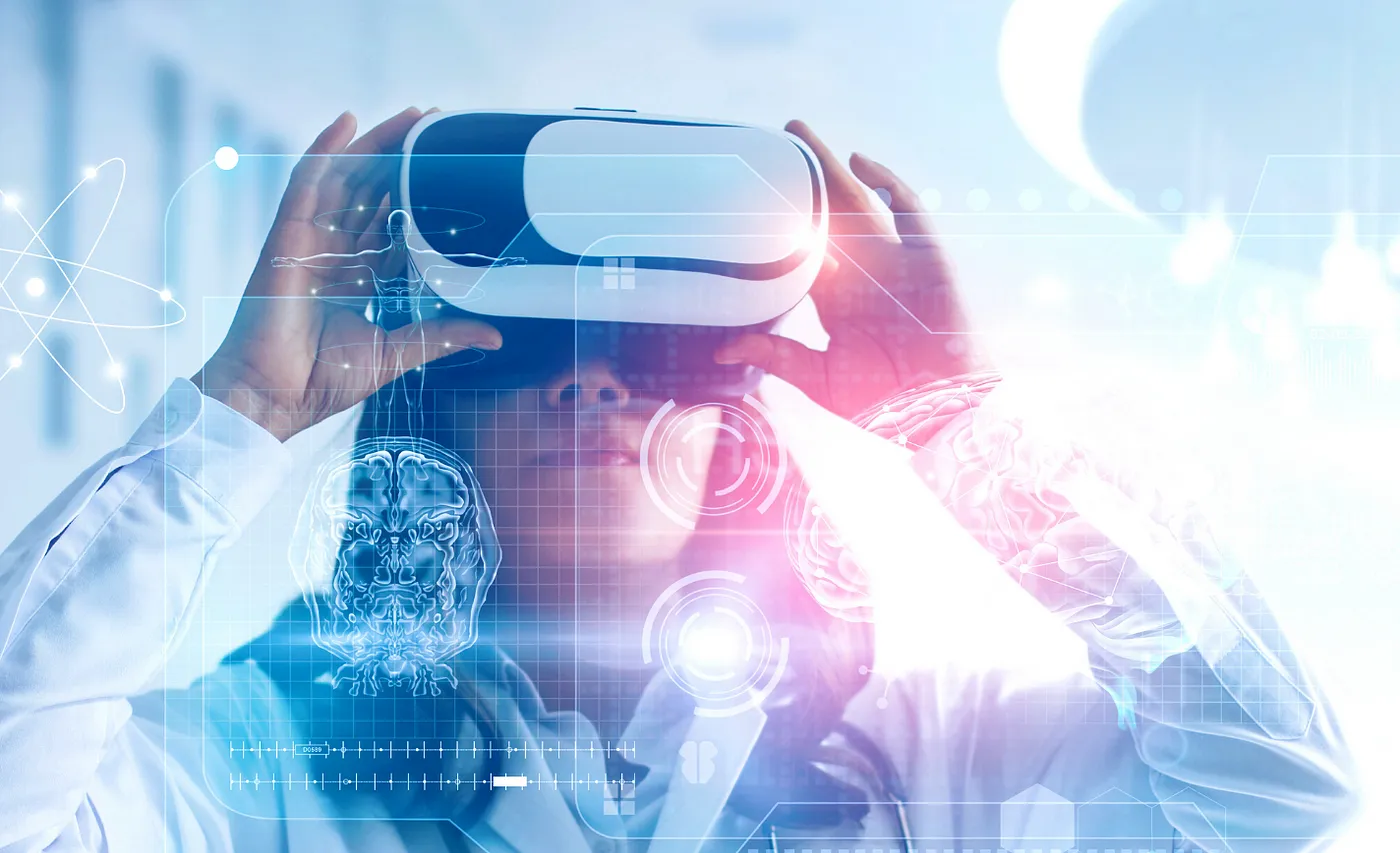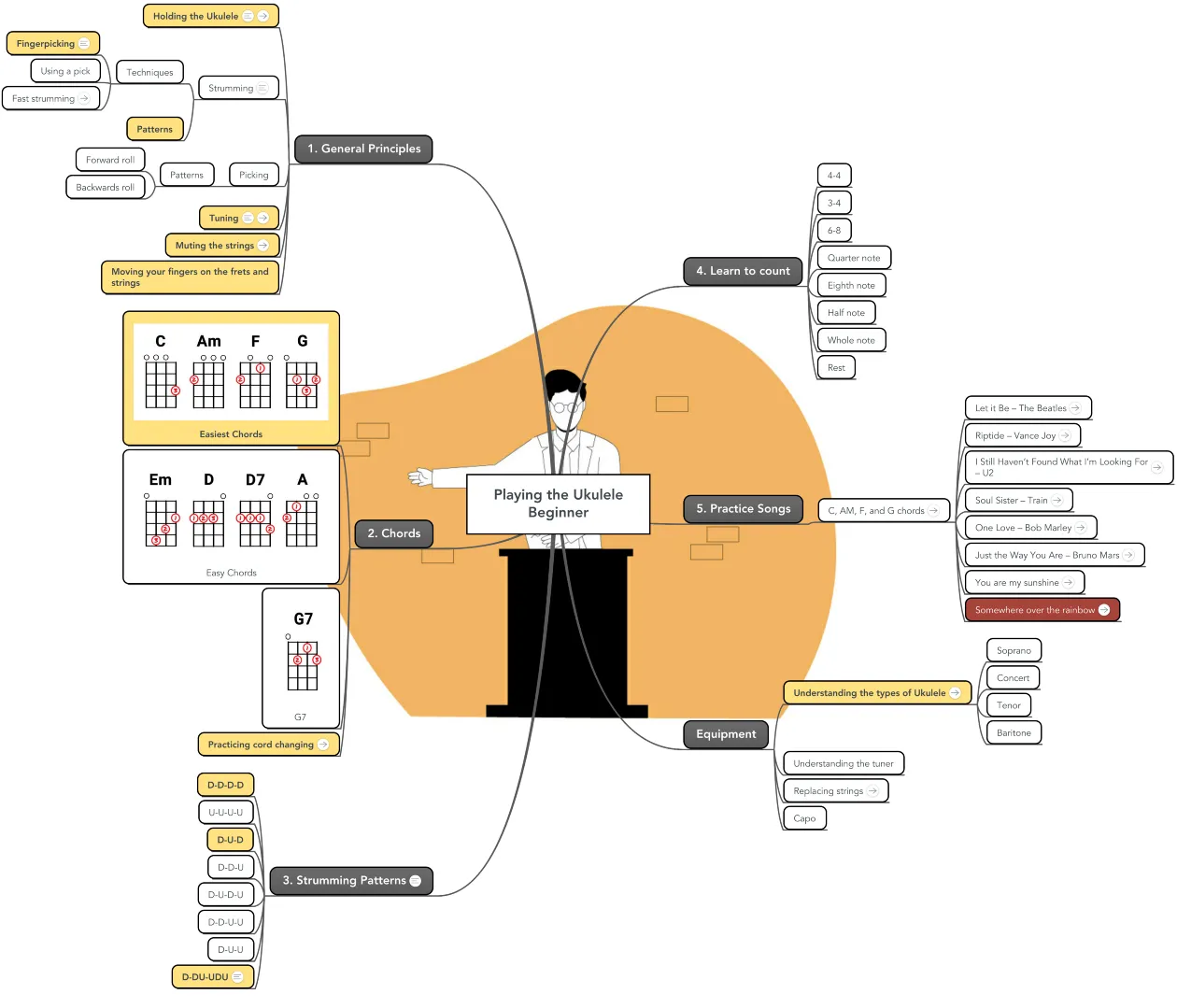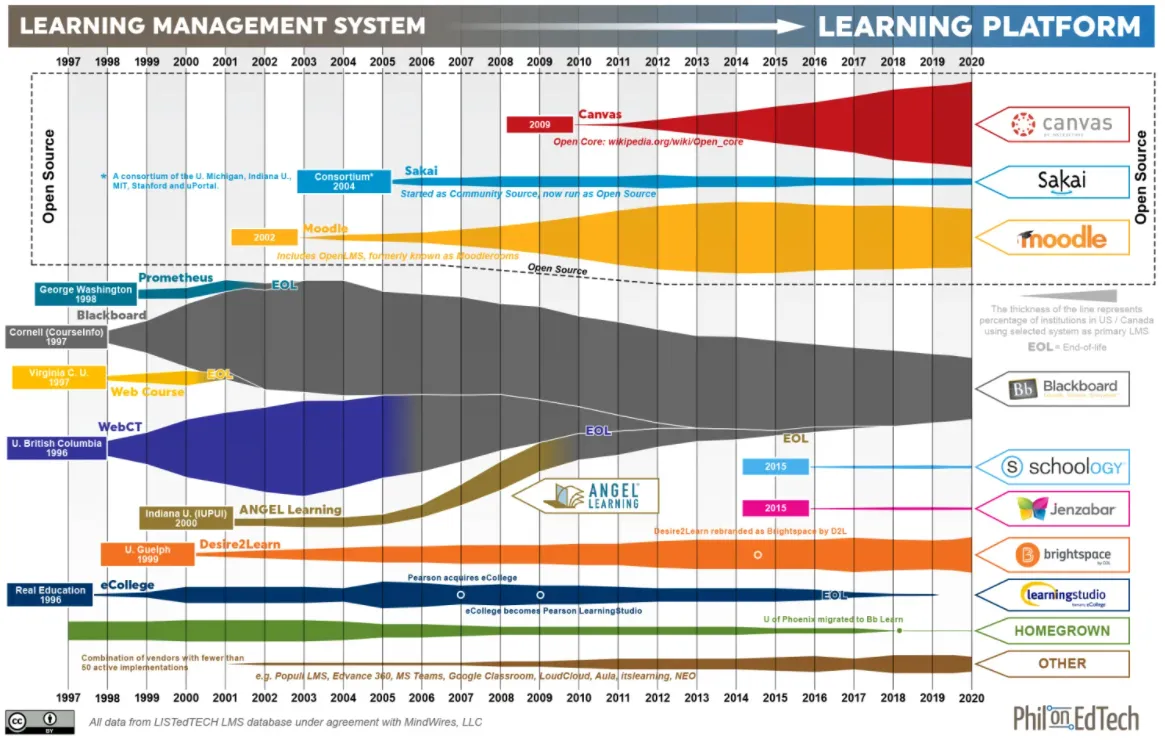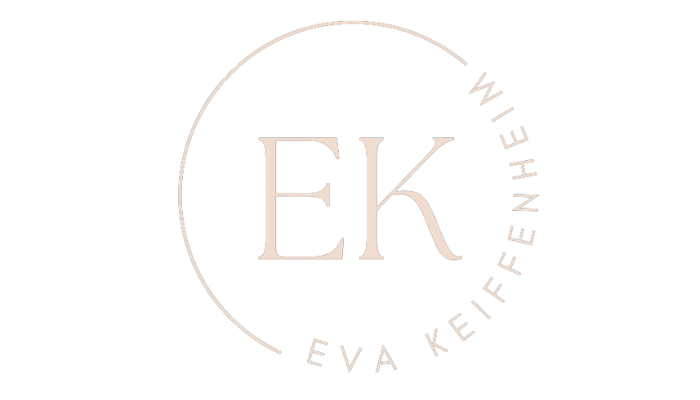
This is How The E-Learning Future Can Actually Look Like
Welcome to the post-pandemic reality of online learning.
Ten years from now, we’ll grimace at how we used to learn. While the past years have accelerated change, we’re still in the early days of a global learning revolution.
In the next six years, analysts expect the global e-learning market to double, from $253 billion now to $522 billion in 2027.
I’ve been working in education and learning for a decade, and this article is based on recent conversations with EdTech founders, online learners, and research from industry analytics, VC reports, and scenario predictions.
This article has three sections:
- The rise of outcome-based education
- The evolution of learning management systems
- The integration of immersive technologies
Read the whole thing, or jump to the part most relevant for you. Either way, you’ll have a better understanding of how you might learn in 2030.
1) The rise of outcome-based education
In 2015, policy analyst Kevin Carey predicted the end of universities. His key argument: colleges are expensive and ineffective.
Carey mentioned a study with 2,300 undergrad students at 24 institutions across the US. After four college years, 45% of the students had made no statistically significant progress in a range of skills.
Are trillions of student loan debts for higher ed worth it?
Carey, among others, anticipated the rise of MOOCs (massive open online courses). A decade ago, people believed massive open online courses would revolutionize higher ed and potentially even replace universities.
And while online platforms such as EdX and Udemy removed the geographical and financial barriers to learning, we now know that copying traditional curricula and pasting them into online videos doesn’t solve the underlying learning problem.
Data from Harvard University and MIT revealed three devastating data points against MOOCs:
- Completion rates. Only three to four per cent complete self-paced courses, a rate that hasn’t improved in the past seven years.
- Retention. Only seven per cent of MOOC learners start another course after their first year.
- Accessibility. While MOOCs promised to bring high-quality education to all corners of the world, only 1.43 per cent come from countries classified as “low” on the Human Development Index.
MOOCs don’t work, but what does the future hold instead?
Cohort-based courses for outcome-focused learning experiences
In Cohort Based Courses, so-called CBCs, a student group moves at the same pace through the same curriculum.
Here are six features that distinguish CBCs from MOOCs and improve learners’ outcomes:
- Interactive live sessions instead of listening to self-paced monologues.
- Real-time feedback on learning progress instead of missing accountability.
- Assignments linked to your desired skill instead of no real outcome.
- Structured access to a subject-specific community instead of inactive support forums.
- No room for bullshit; instructors focus on the how instead of the why.
- Regular touch points with instructors and coaches to help learners follow through when things get hard.
Moreover, cohort-based courses can adjust their curricula faster than any university ever will. In fast-moving environments, technology or design offers an attractive alternative that can ensure employment.
Take the example of 10K Designers. They teach students state-of-the-art design skills for $1000 while working with recruiters from companies to ensure students are learning the relevant skills to land jobs.
This brings us to the second evolvement in outcome-focused education:
Learning paths to maximize your return on time investment
Lifelong learning will enable employees to keep thriving at their work. Companies will bridge the skill gap through enabling learning environments.
Jeff Maggioncalda, CEO of Coursera, writes in the most recent impact report that offering flexible pathways to skills and credentials that prepare people for remote and digital jobs can pave the way for talent to rise from anywhere in the world.
But what do flexible pathways to skills actually mean?
Imagine every skill as a tree, comprised of several branches. Each brunch has even smaller units. You need all branches to master a specific skill.
Let’s take an example from one of my favourite writers Danny Forest:

Similarly, eLearning providers will offer a comprehensive overview of neccessary subskills and routes to acquire them, similar to Tim Ferriss’ DSSS model:
- Deconstruction: What are the minimal learnable units to start with?
- Selection: What are the necessary blocks to master the skill?
- Sequencing: In what order should you learn the blocks?
- Stakes: How do you set up stakes to create real consequences and guarantee you follow the program?
Hence, learning providers will not only offer the infrastructure and environment but also curate the sources of knowledge and any subskills necessary.
Learning providers as curators and creators
Both universities and learning platforms will not function as a single source of knowledge but rather filter content and resources for learners to design the best learning paths.
Viriti Saraf, Teach for America alumna and founder of K20 educators, explains in an interview:
Universities are curators of content. I had to go through Harvard; I couldn’t just go straight to a professor. In the future, Harvard could still be curating classes of professors, but it’s not Harvard’s intellectual property.
Studytube, a company that recently secured $30m funding, utilizes the same concept of decentralized knowledge. Unlike Coursera or Skillshare, Studytube doesn’t believe one provider has the perfect collection of relevant courses. Instead, Studytube mix and matches several course libraries to meet the learners’ needs.
A more junior company striving in a similar direction is Beeline. When I talked with Peter Turner and his team, I was excited to hear they’re utilizing learning science to help learners take the direct path to their learning goals.
Beelines are built by aggregating multiple learning sources (blogs, videos, images, online courses, audio etc.) into one consolidated location, with supplementary note-taking and learning tool functionality.
What lies ahead is a growing recognition that the workforce can be remote, productive, and easily skilled if the corporation can articulate what skills they are targeting.
– Lee Rubenstein, VP of Business Development at EdX
2) The evolution of Learning Management Systems
A Learning Management System (LMS) is a software or web-based app to implement, plan, and access learning processes. Universities, schools, corporates, and many other learning providers use it.
Features often include learning assessment, user feedback, course management, and delivery. If you recently studied at a university, you’ve likely used one of the biggest providers: Moodle, Canvas, or Blackboard.

In the next six years, the LMS segment is expected to dominate the eLearning market. Analysts predict LMS will account for a market share of 40.1% by the end of 2031.
How Learning Management Systems will change in the future
Predictions vary but revolve around four trends:
- AI-powered LMS that predict the user’s next steps and include personalized eLearning content, curriculum automation, real-time feedback, and improved learning outcomes.
- A shift from LMS to LXP (Learning Experience Platform), a learner-focused software, solves the shortcomings of LMS. LXP incorporate learner-led content creation and curation, gamification, customized learning paths, chatbots, and integrations to other learning platforms such as Coursera or Dawrat.
- Gamification integration through leaderboards, badges, and other incentive systems to improve retention rates, collaboration, and learner motivation.
- Enhanced integration of learning analytics such as course completion rates, learner progress, feedback, and knowledge retention, to help students reach their learning goals.
The biggest challenge for LMS and EdTech providers
Many EdTech companies don’t know whether what they’re doing is effective. And neither know learners.
eLearning providers have no incentive to conduct independent third-party efficacy research, as it might harm their business (similar incentive asymmetries exist for digital health applications).
“The market is completely opaque,” explains Sierra Noakes, project director of Digital Promise, in an interview with EdSurge. The eLearning market will need a global certification to certify products’ efficacy.
Enter learning sciences.
The science of learning combines social and cognitive psychology, brain research, and neuroscience. Integrating research in product development would create a win-win situation for providers and learners, as research by Digital Promise reveals:
“We heard resoundingly that the use of learning sciences research enables EdTech tools to more clearly name the expected impact on learning and more easily evaluate the product’s impact on learning.”
3) The integration of immersive technologies
Virtual Reality (VR) and Augmented Reality (AR) will shape future learning environments.
VR is a fully computer-generated environment through which you can immerse yourself in artificially constructed realities. The technology allows learners to get hands-on experience and move through different scenarios.
In contrast to VR, AR works like Pokémon GO. You are enriching the real world in front of you with new objects, for example, through your smartphone.
Market analysts forecast a rapid expenditure growth on AR and VR in education, from $1.8 Billion in 2018 to $12.6 Billion in 2025.

Since October 2021, when Zuckerberg introduced the Metaverse, learning providers have explored how learning can become more immersive and interactive.
Nikhil Kaitwade from Future Market Insights writes:
Facebook Reality labs will be investing $150m for educational programs to improvise training and tech development. The company is partnering with Coursera and EdX for leveraging learning by offering the Spark AR curriculum of META that will use virtual reality and augmentation.
Microsoft launched Microsoft Mesh, a mixed reality platform for digital collaboration. Through Holoportation, you can project yourself as your photorealistic self and move through a fluid, digital reality.
You can train together anywhere.
But how exactly will technologies like VR and AR shape future learning environments?
You could learn to do firefighting, skiing, etc from anywhere/time in the world and in a safe way.
– Gisel Armando CTO of Anything World
How Virtual Reality (VR) will change learning
A very likely application of VR for learning is guided simulations. They offer new ways of delivering scenario-based learning experiences.
Workers can practice in a risk-free environment close to the real scenario. Use cases include sales training, public speaking, surgery training, and much more.
Talespin is an example of a well-funded, following-worthy company that is developing immersive learning content. A short video shows what this currently looks like:
Immersive VR experiences are exhilarating for learners with disabilities or special needs as it allows them to explore situations and worlds that might otherwise be inaccessible.
How Augmented Reality (AR) will change learning
AR can be applied in kindergarten, schools settings, and corporate training environments.
In essence, AR content enriches the physical learning experience. Consider these examples, which likely will further improve their features:
- Google Expeditions allows learners to explore 3D nature phenomena.
- NASA’s Sidekick helps astronauts practice real-case scenarios.
- SkyView creates overlays for the night sky that allows learners to explore the universe and identify stars, planets, and satellites.
- NeoBear develops AR learning toys and materials for children.

In Conclusion
We’re still at the beginning of a global e-learning revolution. The change will happen gradually, and based on what I’ve read for my research, this is what the future of eLearning might look like:
Stage Zero (present)
While digital usage is expected to drop post-pandemic, a hybrid education model will likely remain. Video-based learning has not reached its peak yet (people will stream 3 trillion minutes of video content each month). We’ll continue learning through ineffective online lectures, but cohort-based courses will see broader adaption.
Stage One (2024)
Further development of virtual classrooms that include enhanced features for online whiteboards, streaming opportunities, and interactive videos and presentations. Most LMS incorporate learning analytics. A global coalition for independent efficacy certification for eLearning products emerges.
Stage Two (2026)
Broader application of immersive technologies. AR will be adopted faster than VR, as it can be accessed through mobile devices. Active, scenario-based learning in reality like environments will become the new norm for corporate training.
Stage Three (2030)
From Web3 to Ed3. Ed1 was about knowledge transfer through traditional institutions. Ed2 about centralized learning platforms such as Udemy or Coursera. Ed3 will enable individuals to learn decentralized with IP ownership, knowledge validation through wallets, and blockchain credentials.
And while designing effective learning experiences will remain a key challenge, the future of education and learning looks exciting. Hopefully, it will contribute to high-quality education that sets up all children and learners to thrive.

